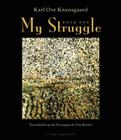There is, in London, a painting that moves me as much every time I go and see it. It is a self-portrait painted by the late Rembrandt. His later paintings are usually characterized by an extreme coarseness of stroke, rendering everything subordinate to the expression of the moment, at once shining and sacred, and still unsurpassed in art, with the possible exception of Hölderlin’s later poems, however dissimilar and incomparable they may be—for where Hölderlin’s light, evoked through language, is ethereal and celestial, Rembrandt’s light, evoked through color, is earthy, metallic, and material—but this one painting which hangs in the National Gallery was painted in a slightly more classically realistic, lifelike style, more in the manner of the younger Rembrandt. Old age. All the facial detail is visible; all the traces life has left there are to be seen. The face is furrowed, wrinkled, sagging, ravaged by time. But the eyes are bright and, if not young, then somehow transcend the time that otherwise marks the face. It is as though someone else is looking at us, from somewhere inside the face, where everything is different. One can hardly be closer to another human soul. For as far as Rembrandt’s person is concerned, his good habits and bad, his bodily sounds and smells, his voice and his language, his thoughts and his opinions, his behavior, his physical flaws and defects, all the things that constitute a person to others, are no longer there, the painting is more than four hundred years old, and Rembrandt died the same year it was painted, so what is depicted here, what Rembrandt painted, is this person’s very being, that which he woke to every morning, that which immersed itself in thought, but which itself was not thought, that which immediately immersed itself in feelings, but which itself was not feeling, and that which he went to sleep to, in the end for good. That which, in a human, time does not touch and whence the light in the eyes springs. The difference between this painting and the others the late Rembrandt painted is the difference between seeing and being seen. That is, in this picture he sees himself seeing whilst also being seen, and no doubt it was only the Baroque period with its penchant for mirrors within mirrors, the play within the play, staged scenes and a belief in the interdependence of all things, when moreover craftsmanship attained heights witnessed neither before nor since, that such a painting was possible. But it exists in our age, it sees for us.
Translated by Don Bartlett
 From My Struggle: Book One, by Karl Ove Knausegaard
From My Struggle: Book One, by Karl Ove Knausegaard
My Struggle: Book One is the first of six volumes in a meticulous self study published in Norway over the last three years. Read its story here in the Telegraph.
Knausgaard reflects on the trial of Norwegian mass killer Anders Behring Breivik here